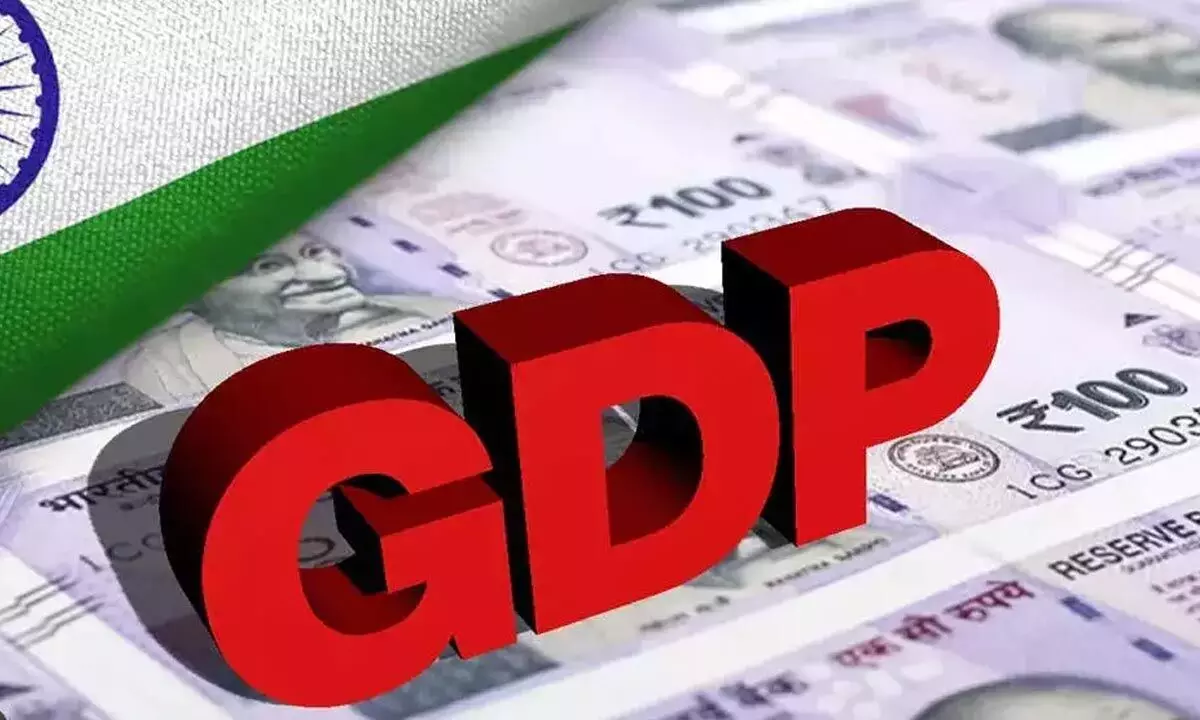GDP may have moderated, still there's a silver lining in the cloud
The GDP numbers released on Tuesday asserted the momentum Indian economy has gained post pandemic, notwithstanding the tumultuous times of global uncertainties as domestic economy grew by 6.3 per cent in Q2 on the back of buoyant growth in service sector while gross value added (GVA) grew by 5.6 per cent.
image for illustrative purpose

The GDP numbers released on Tuesday asserted the momentum Indian economy has gained post pandemic, notwithstanding the tumultuous times of global uncertainties as domestic economy grew by 6.3 per cent in Q2 on the back of buoyant growth in service sector while gross value added (GVA) grew by 5.6 per cent.
However, manufacturing and mining sectors declined by 4.3 per cent and 2.8 per cent, respectively. On a positive cue, agriculture, the most consistent sector since pandemic, grew by 4.6 per cent in Q2 while Construction activity grew by 6.6 per cent.
Ecowrap's assessment (based on new launches and sales) indicates that it will remain buoyant in the Q3 too. Services sector grew by 9.3 per cent, bolstered by more than 14 per cent growth recorded in 'Trade, Hotels, Transport, Communication & services related to Broadcasting'.
For starters, GDP growth pressures likely to worsen ahead, still analysts retain their 7 per cent GDP forecast with downside risks for the current fiscal.
Improving contact-intensive services amid stable urban consumption demand could continue at a slower pace for some more time. However, an Emkay channel checks depict mixed demand trends during ongoing festive season.
The GDP growth for the second quarter of the current fiscal sharply moderated from the previous quarter, which was driven by the lockdown-related low base a year ago. Formal sector employment growth seems to be reducing, indicated by the sequential fall in EPFO new payrolls and the Naukri Job index. Additionally, subdued real rural wage growth may further impact rural consumption. Capex indicators are healthy, with added improvement in capacity utilization and signs of new investment gradually coming-in with capital goods production registering an uptick.
Yet, the momentum of the recovery is still below full strength, warranting policy support and push of government capex. Global price disruptions point to a confluence of China slowdown and demand-curbing global policy actions; these pose downside risks to domestic economic activity.
This, in conjunction with higher global uncertainty, tightening global financial conditions, lower corporate profitability and tighter policy reaction function of the RBI, will further curb domestic demand. The other positive surprise is the growth in Agriculture that has grown at a very healthy rate of 4.6 per cent. It seems that the unseasonal rains did not have any material impact on areas sown that has expanded at a healthy rate. Our informal interaction with farmers across states suggests that farmers have become smarter and have adjusted to the new realities in rainfalls and are also using the information on weather judiciously by resorting to planting crops of longer duration.
While manufacturing disappointed on account of margin compression led by rising input costs, services (especially contact-intensive services led by trade hotels and T&C) continue to enjoy post-Covid normalization. Private GVA growth also slowed to 5.6 per cent, while public-sector contribution to GVA growth fell to 0.9 per cent (3.2 per cent in Q1). So, our hopes are pinned on forthcoming Budget.

